#Jochen Gerz
Explore tagged Tumblr posts
Text



"For example, in 1986, Jochen and Esther Gerz designed a selfconsuming monument entitled Gegen-Denkmal. This counter monument was placed in a fairly ugly spot in the centre of a shopping street in Harburg, at that time a run-down suburb of Hamburg. The monument consisted of a 12-metre-high, hollow aluminium pillar covered with a layer of soft, dark lead. An inscription close to its base read in German, French, English, Russian, Hebrew, Arabic, and Turkish: We invite the citizens of Harburg, and visitors to the town, to add their names here to ours. In doing so, we commit ourselves to remain vigilant. As more and more names cover this 12 meter tall lead column, it will gradually be lowered into the ground. One day it will have disappeared completely, and the site of the Harburg monument against fascism will be empty. In the end, it is only we ourselves who can rise up against injustice. (Young 1993, 30) And indeed, this self-consuming memorial finally disappeared in 1991, leaving behind only those who remembered it and their memory of the memorial. According to Jochen and Esther Gerz, the visitors who left their names and messages became the “invisible sculpture” in society. The artists had the hope that one day physical memorials would no longer be necessary; instead, the internalised memories and images of the monument would inspire a vigilance now locked in the mind’s eye (Young 1993, 33). Such memories without physical objects would finally correspond to the invisible hauntings of past atrocities that cannot be contained in particular times and places."
(Via "Monuments of Historical Trauma as Sites of Artistic Expression" by Andrea Bieler in Post-Conflict Hauntings. Ed. Kim, Gobodo-Madikizela, Prager, 2020)
0 notes
Text
Jochen Gerz, The Public Bench, Year 1999-2004
Since 1999 the people of Coventry and visitors to the city have commemorated a friendship, secret relationship or a memorable encounter. The invitation to contribute to the Public Bench continued until the space was covered with plaques.
0 notes
Photo

Fresh from the press:
Anne Bernou: Monuments de silence. Réappropriations mémorielles dans l’art contemporain, Edition Unes, Nice, 2023
On the works of Mathieu Kleyebe Abonnenc, Niels Ackermann, Sammy Baloji, Joachim Bandau, Guillaume Barborini, Christian Boltanski, Pascal Convert, Sylvain Couzinet-Jacques, Nicolas Daubanes, Raphaël Denis, Leo Fabrizio, Jochen Gerz, Felix Gonzalez-Torres, Marie Havel, Kiluanji Kia Henda, Elizaveta Konovalova, Vladimir Kozin, Anton Roland Laub, Amina Menia, Marianne Mispelaëre, Yan Morvan, Tania Mouraud, Ciprian Muresan, Deimantas Narkevicius, näutil, Mathieu Pernot, Anne Reijniers & Rob Jacobs, Emilija Skarnulyte, Thu-Van Tran, Paul Virilio, VOID (Arnaud Eeckhout & Mauro Vitturini)

Anton Roland Laub: from the series Mobile Churches, 2013–2017, archival pigment print on fine art Baryta paper, Bucharest
-
Résumé
Bunkers de la seconde guerre mondiale désaffectés sur les plages normandes, statues de l’ère soviétique déboulonnés, monuments coloniaux relégués dans l’oubli ; étranges silhouettes, à la fois familières et distantes. Qui décide du paysage mémoriel, de la représentation de la mémoire collective ? Dans Monuments de silence, Anne Bernou interroge et documente la mouvance de la mémoire et la réappropriation par des artistes contemporains de monuments publics du passé, aujourd’hui désinvestis, oubliés ou détruits. De Jochen Gerz et son travail autour des monuments aux morts à la falsification volontaire de la mémoire de Christian Boltanski, des captations de la falaise des Bouddhas géants de Bâmiyân détruits par les talibans de Pascal Convert aux déclinaisons de bunkers opérées par Raphaël Denis, d’Amina Menia et son utilisation des archives des monuments algériens à la réflexion de Thu Van Tran autour des origines et de l’exil, des statues de l’ex-monde soviétique mises en scène par Emilija Skarnulyte aux installations autour de la fragmentation et de l’oubli de Marianne Mispelaëre, plusieurs générations d’artistes figurent dans cet ouvrage, des plus connus aux plus émergents, chacun se penchant à sa façon sur la question de la mouvance de la mémoire et de l’identité ; préfigurant pour certains d’entre eux les mouvements sociaux qui ont surgi aux États-Unis notamment, avec le mouvement Black Lives Matters. Chacun sonde, détourne et réactive, avec son langage artistique propre, les tragédies du XXe siècle, le passé colonial, les dominations politiques, et les autoritarismes mémoriels dont la trace parfois monumentale s’impose dans l’espace public. Cette diversité des approches par des artistes qui se confrontent au passé européen plutôt que de l’oblitérer, démontre l’infini registre des regards et des compréhensions, reliant la dimension intime à la dimension historique, dans une réactivation de la mémoire collective génératrice de présent réconcilié. Cet ouvrage porte sur le travail des artistes Mathieu Kleyebe Abonnenc, Niels Ackermann, Sammy Baloji, Joachim Bandau, Guillaume Barborini, Christian Boltanski, Pascal Convert, Sylvain Couzinet-Jacques, Nicolas Daubanes, Raphaël Denis, Leo Fabrizio, Jochen Gerz, Felix Gonzalez-Torres, Marie Havel, Kiluanji Kia Henda, Elizaveta Konovalova, Vladimir Kozin, Anton Roland Laub, Amina Menia, Marianne Mispelaëre, Yan Morvan, Tania Mouraud, Ciprian Muresan, Deimantas Narkevicius, näutil, Mathieu Pernot, Anne Reijniers & Rob Jacobs, Emilija Skarnulyte, Thu-Van Tran, Paul Virilio, VOID (Arnaud Eeckhout & Mauro Vitturini)
https://www.fnac.com/a17486291/Anne-Bernou-Monuments-de-silence
1 note
·
View note
Photo

Jochen Gerz, From Pictures at an exhibition , 1978
81 notes
·
View notes
Text
about Jochen Gerz....
En 1992, le maire de Biron, Marc Materra, constate que l'ancien monument aux morts (obélisque édifié en 1922 avec les noms des morts de la Première et Seconde Guerres mondiales) est délabré et que plus personne n'y fait attention. Il lance alors un appel d'offres relayé par le ministère de la Culture, et c'est l'artiste Jochen Gerz, né en 1940 et installé à Paris depuis 1966, qui est choisi pour restaurer le monument et qui mène le projet, avec l'aide des étudiants des Beaux-Arts de Bordeaux.

Jochen Gerz fait passer un entretien à chaque habitant du village. Il glisse une question secrète dans l’interview : « Qu'est ce qui serait assez important, selon vous, pour risquer votre vie ? ». En vérité, on ignore la question, mais c'est une déduction à la suite de la lecture des réponses. Puis il grave les réponses sur des plaques en fer émaillé qui sont disposées de façon aléatoire et anonyme sur le monument restauré. Toute cette démarche ainsi que la diversité, la spontanéité et la sincérité des réponses constituent l’œuvre.
Comme Jochen Gerz le confie dans une interview, les gens l'ont vu écrire, ligne après ligne, page après page dans un cahier essayant de les suivre, leur demandant parfois de s'arrêter. Ils ont vu ce qu'il écrivait et comment il écrivait. « Parfois c'était un dialogue plutôt qu'une interview ». Il restait huit heures par jour au moins chez les gens, pendant les deux semaines.
Ce monument s'adresse à deux publics : les touristes et les habitants du village. Il incite à réfléchir, à l'échange des points de vue entre les habitants de Biron, à la réflexion des touristes.
Ainsi l'ancien monument aux morts ne cessera de changer car Gerz a confié la question à un vieux couple qui est chargé de la poser aux nouveaux habitants et aux habitants du village qui ont plus de dix-huit ans. C'est le principe du Work in Progress. S'il n'y a plus de place, les nouvelles plaques seront disposées par terre. Ce monument aux vivants permet de ne pas oublier les horreurs de la guerre et les soldats morts au combat. Il diffère des monuments classiques, ce qui attire l'œil, entraîne la discussion, et finalement empêche l'oubli.
provenance du texte: Wikipédia.
photos: archives personnelles
.


23 notes
·
View notes
Photo
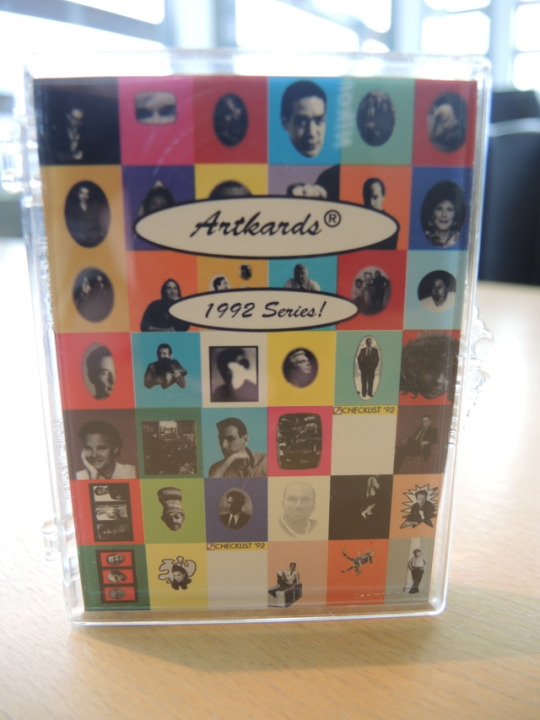

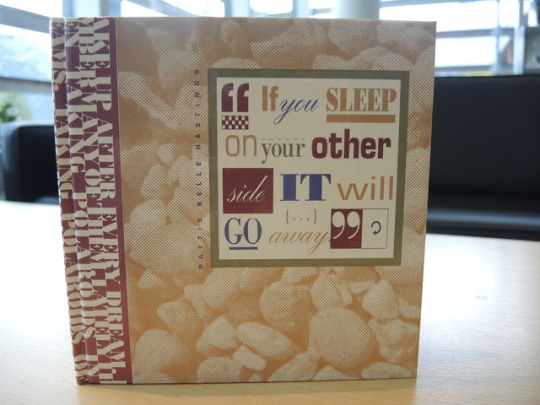


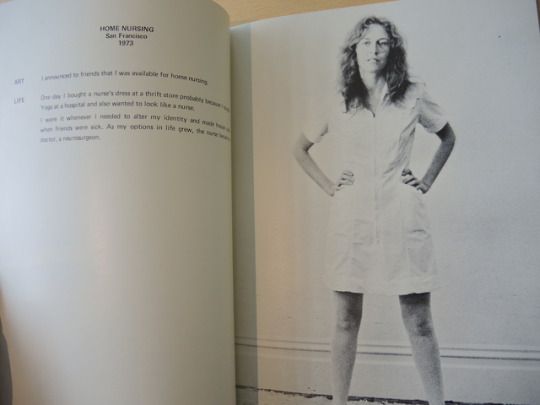



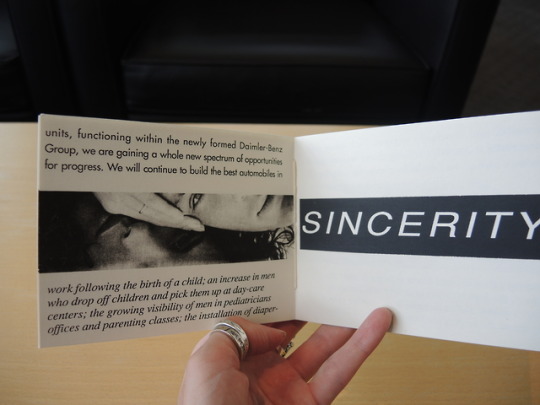
Artists’ Book Display for the week of September 16th, 2019
Artkards 1992 series by Todd Alden- Conceptual Clearinghouse, 1992
If you sleep on your other side it will go away by Pattie Belle Hasting- Atlanta: Nexus Press, 1991
Art in Everyday Life by Linda Montano- Los Angels, CA: Barrytown, NY: Astro Artz: Station Hill Press, 1981
Das Harburger Mahnmal gegen Faschismus = The Harburg Monument against Fascism by Jochen Gerz- Ostfildern, Germany: Verlag Gerd Hatje, 1994
Enabled him by David Thorne San Francisco, CA : Redress Press, 1990
#Artists' Book Display#Artists' Books#Books and Art#Art Books#Books#Art#Art Book Display#Library#Library Display#Todd Alden#Pattie Belle Hasting#Linda Montano#Jochen Gerz#David Thorne#Banff#Alberta#Banff Centre#Weekly display#Banff Centre Library#Paul D Fleck Library and Archives
2 notes
·
View notes
Quote
Wir sind von der Kunst angezogen, weil wir in ihr wissen, daß es keinen Sieg gibt. Wir sind davon angezogen wegen ihres Potentials zur Mimesis, wegen ihrer Fähigkeit, sich dem zu nähern, was so ist, wie es ist. Es scheint, als könnten wir in ihr teilhaben an etwas, das wir ohnehin sind, das wir aber nicht denken können: Realität. Kunst ist daher im Grunde lakonisch, fast überflüssig und nutzlos. Sie sagt, was ohnehin so ist, wie es ist. Sie ist als eine Ästhetik dieser Ähnlichkeit unemphatisch.
Jochen Gerz: Drinnen vor der Tür. Reden an Studenten. Stuttgart 1999, S.75
Mit dieser Rede, gehalten 1996 vor Absolventen der Hamburger Kunsthochschule, beerdigt Jochen Gerz – gewissermaßen aus dem Stegreif und mit viel Charme – die Konzepte von Autonomie und Differenz. Stattdessen ruft er eine Ästhetik der Bescheidenheit, der Nähe und Empathie aus. Kunst bewegt sich für Gerz immer am Rand der Selbstauflösung. Das Residuum an Differenz, das auch in seiner Ästhetik der Ähnlichkeit angelegt ist, die eben keine Ästhetik der Identität ist, siedelt er im Künstlerindividuum an. Konstitutionell ist sie für die Tätigkeit des Kunst Machens, nicht für die Kunst selbst. Kunst ist für Gerz angesichts einer immer größer werdenden Welt notwendig klein und unbedeutend. Weltbekannte Künstler, so schreibt er, gibt es eben nur in der Provinz.
Globalisierung also. Der Begriff fällt zwar nicht, steht aber offenkundig im Hintergrund von Gerz’ Überlegungen. Und gerade deshalb finde ich seinen Text wirklich interessant. Ich habe nämlich das Gefühl, dass der Umgang mit Autonomie und Globalisierung und ihr Zusammenhang ein absolut entscheidendes Thema der Gegenwart ist. Autonomie dabei nicht nur verstanden als Autonomie der Kunst sondern als Autonomie des Individuums. In den Culture Wars der Gegenwart passiert es ja laufend, dass Künstler und Intellektuelle, die Autonomie hochhalten, auf die Seite der Reaktionäre abrutschen. Peter Handke ist nur das letzte Fall in einer langen Reihe. Mir scheint er gewissermaßen für eine ganze Generation zu stehen, die nach Emanzipation in der individuellen Biografie gesucht hat. Zu ihr gehört selbstverständlich auch Jochen Gerz, geboren 1940.
Das hat zwei Seiten und ich bin wirklich unsicher, wie ich dazu stehe. Solidarität, Kollektivität, Empathie sind notwendig für ein erfolgreiches politisches Projekt. Sie sind natürlich überhaupt kein Widerspruch zu Autonomie. Ich würde im Gegenteil sagen, dass sie sich im Grunde gegenseitig bedingen. Cancel Culture, Hysterie und blinde Political Correctness allerdings bedrohen Autonomie tatsächlich. Und was kann das Ziel jeder politischen Bewegung sein, wenn nicht die Emanzipation des Einzelnen – Autonomie? Vielleicht muss jetzt eine andere Generation – zu ihr gehören meine Freunde und ich – die Kollektivät erlernen, zu der Gerz’ Jahrgänge um 1968 gefunden hatten. Aber vergessen wir darüber die Freiheit des Einzelnen nicht! Hier könnte Gerz’ Rede interessant sein. Denn im Grunde skizziert er mit seiner Ästhetik der Ähnlichkeit und Nähe eine Kunst, die sich öffnet zu Welt und Wirklichkeit aber doch etwas durchscheinen lässt von der Autonomie des Künstlerindividuums, dem sie ihr Dasein verdankt. Ich denke, seine eigenen Arbeiten sind wunderbare Beispiel dafür!
1 note
·
View note
Photo

Identity exit
#photographers on tumblr#black and white#original photographers#jochen gerz#katharina rhein#art#photography
343 notes
·
View notes
Photo




"Monument contre le Fascisme" évolutif de Jochen Gerz et Esther Shalev-Gerz à Hambourg, Allemagne (1986-93) présenté à la conférence “Art Identitaire ou Art de la Reconnaisance ?“ par Paul Bernard-Nouraud - Historien d'Art - pour le cycle “Etre de son Temps : L'Art Contemporain Face à l'Epoque” de l'association Des Mots et Des Arts, février 2022.
9 notes
·
View notes
Photo


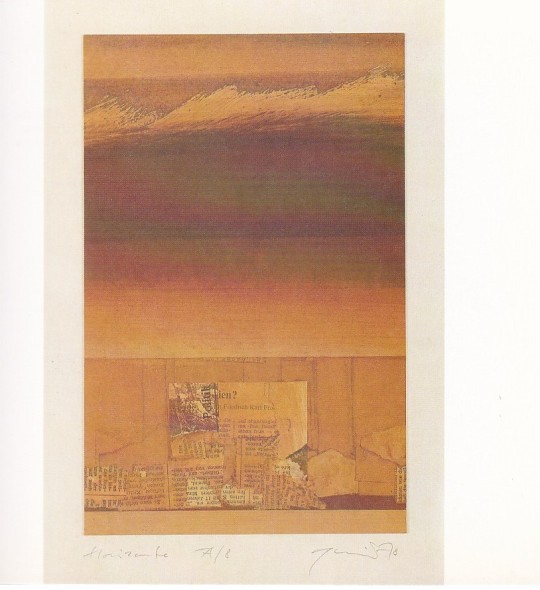



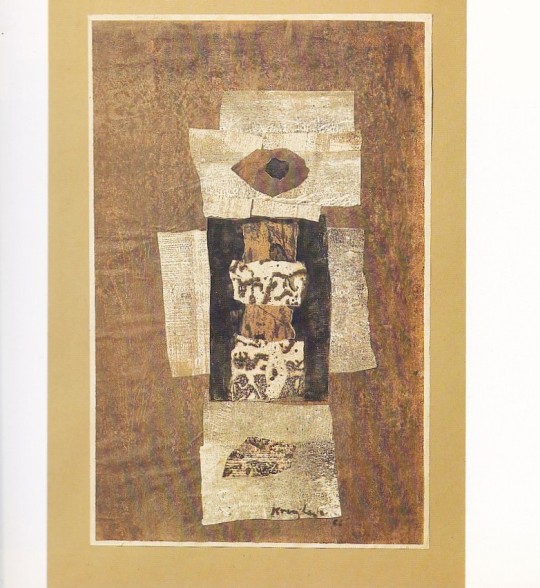
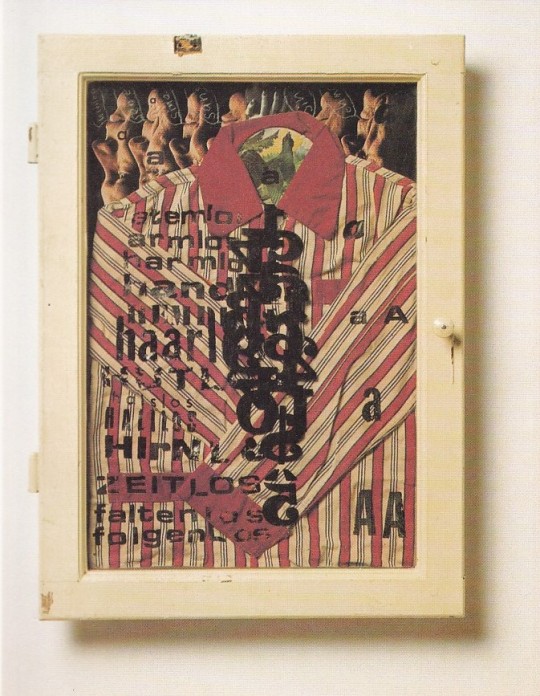
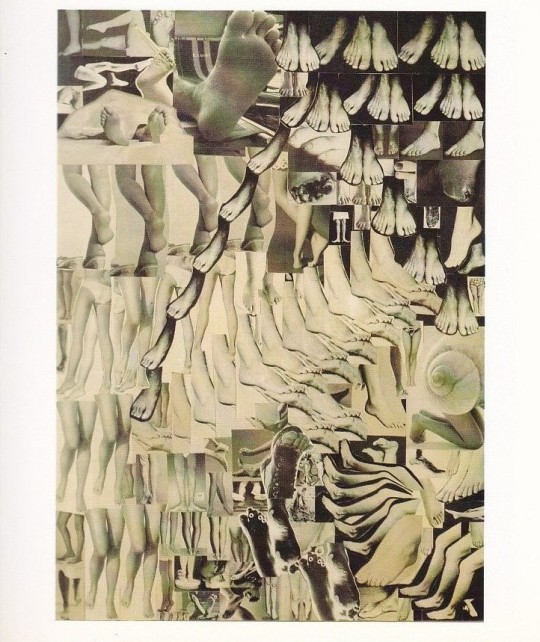

Principio Collage
Documentazione Sviluppo internazionale, Originali Collages tedeschi contemporanei
Una Mostra dell’Istituto per le Relazioni Culturali con l’Estero di Stoccarda
Concezione, testo e raccolta da Dietrich Mahlow, Fotografie a colori di Hans Schubert
Dr.Cantz’sche Druckerei, Stuttgart-Bad Cannstatt 1985, 89-90 pagine, illustrazioni a colori e in b/n, 30x20,5cm., brossura
euro 45,00
email if you want to buy :[email protected]
La mostra intende offrire un panorama generale di questa tecnica, presentando esempi contemporanei di collages : da frammenti di scritti, composizioni di oggetti, assemblages, fotomontaggi, collages surreali, décollages, nuovi foto/testi ecc.. Gli esempi, la cui scelta, limitata quanto a numero, ampiezza e importanza offrono un panorama delle varietà delle espressioni, una sintesi determinata non solo dal criterio concettuale, ma anche dalle circostanze e dal caso. Si è tenuto conto delle diversità dei materiali adoperati , del modo di lavorare e dell’età degli artisti. L’artista più anziano, Werner Kreuzhage, fa parte della generazione di coloro che sono stati influenzati dall’arte di Schwitters degli anni Venti. Le generazioni successive sono rappresentate da Joseph Beuys, Karl F.Borneff, Jürgen Brodwolf , Wolfgang Ehehalt, Jochen Gerz, Matthias Gessinger, Heinz E.Hirscher, Gerard Hoehme, Alfonso Hüppi, Angelica Janz, Herbert Kauffmann, Fritz Köthe, Jiří Kolář , Werner Kreuzhage, Uwe Meier-Weitmar, Franz Mon, Miriam Munsky, Ulf Rungenhagen, Michael Schenk, Johannes Schreiter, Bernard Schultze, Max Söllner, Peter Sorge, Wolf Vostell.
28/12/20
orders to: [email protected]
ordini a: [email protected]
twitter: @fashionbooksmi
instagram: fashionbooksmilano, designbooksmilano tumblr: fashionbooksmilano, designbooksmilano
#Collage#art exhibition catalog#Joseph Beuys#Jiri Kolar#assemblages#fotomontaggi#frammenti di scritti#décollages#composizioni di oggetti#rare books#libri introvabili#art books#fashionbooksmilano
3 notes
·
View notes
Photo

Visuelle Poesie, Texts by Friedrich W. Heckmanns and Peter Weiermair, Westfälischer Kunstverein, Münster, 1969 [L'Arengario Studio Bibliografico, Gussago (BS)]. Feat. Vincenzo Accame, Friedrich Achleitner, Ronaldo Azeredo, Carlo Belloli, Edgard Braga, Claus Bremer, Augusto de Campos, Haraldo de Campos, Ugo Carrega, Reinhard Döhl, Carl Fernbach-Flarsheim, Luigi Ferro, Jan Hamilton Finlay, Heinz Gappmayr, Pierre Garnier, Jochen Gerz, Eugen Gomringer, Jose Lino Grünewald, Bahumila Grogerova, Josef Hiršal, Dom Sylvester Houédard, Ernst Jandl, Kitasono Katue, Jiří Kolář, Franz Mon, Ito Motoyuki, Maurizio Nannucci, bpNichol, Seiichi Niikuni, Ladislav Novák, Décio Pignatari, Dieter Rot(h), Gerard Rühm, Aram Saroyan, Siegfried J. Schmidt, Adriano Spatola, Shohachiro Takahashi, Arrigo Lora Totino, Timm Ulrichs, Franco Verdi, Rolf Wezel, Emmett Williams, Pedro Xisto https://www.instagram.com/p/CDXJlq9IAw-/?igshid=v7uoh7afz0y5
1 note
·
View note
Quote
At decisive turning points twentieth-century art has repeatedly attempted to revive the cultic traditions of artistic activities. The origin of Cubism goes hand in hand with the discovery of what is commonly called ‘primitive’ art. When this impulse faded in later abstract painting, it was renewed by the Surrealists. In an exemplary rejection of the petrified objects produced by contemporary civilized art the Surrealists took a special interest in the objects of primitive rituals. In performance art the same act of rejection is coupled with an interest in the ritual element, or the cultic act itself. Art critics have frequently claimed that the performance artist assumes the role of medicine man or shaman in an attempt to make the public aware of social convention and to keep human relationships in flux. Consequently, these critics believe the performance moment has been able to reintegrate art into society. However, life is no performance [...] To be sure, performance art is reminiscent of primitive rituals because it uses the body, dancing, gestures, music, objects – in short: everything – to express an idea. In primitive societies, however, this is a genuine cult, that is, a socially and collectively exercised activity. Performance art, on the other hand, is a completely asocial phenomenon, because the hunter’s world and the shaman’s world, or the working class and the artistic intelligentsia, are deeply separated in contemporary society. Far from being eliminated, this separation is radically visualized in performance art
From ‘Life Is No Performance: Performance by Jochen Gerz’ by Herbert Molderings, found in The Art of Performance: A critical anthology.
9 notes
·
View notes
Photo

Jochen Gerz, Um fahren zu können bis du allein bist. Darauf angewiesen sein , 1972–1972
9 notes
·
View notes
Photo

jochen gerz the walk lehmbruch museum duisburg
16 notes
·
View notes
Photo

Gerz Jochen · Nannucci Maurizio, Play-Texts 2, Agentzia, Paris, 1968.
#radicantattitude#design#art#ruleandchance#indeterminacy#poetry#tellingthetime#concretepoetry#vinylsleeve#jochengerz#maurizionannucci#1960s
2 notes
·
View notes